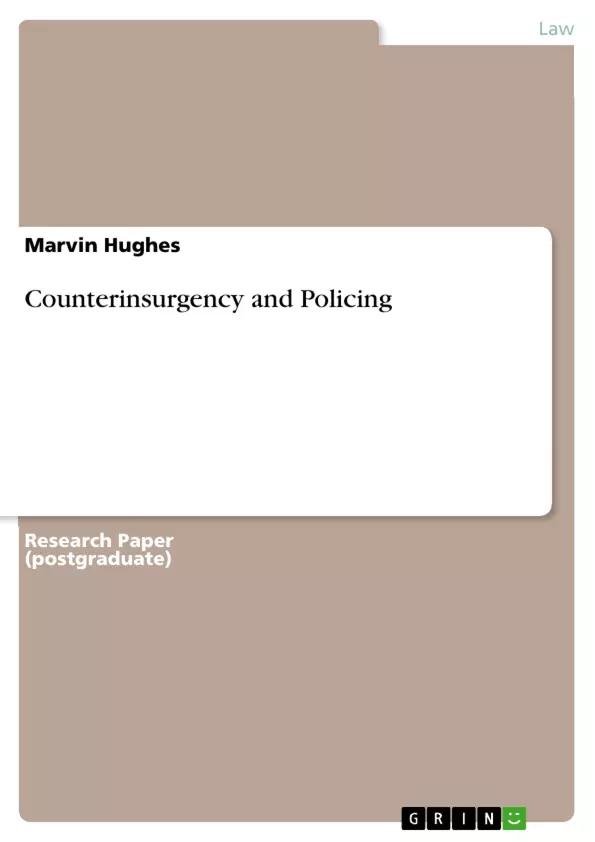Terrorist activities, tactics and strategies are uncoordinated and asymmetrical. These conditions do not fit into traditional law enforcement models. Since 9/11 out of the 60 plots 43 where stopped by local law enforcement officers. The COIN warfare theory first championed by French Army Lieutenant Colonel David Galula has served as the foundation for the U.S. Army and U.S. Marine Corps revision of the U.S. Counterinsurgency Manual. The theory’s basic premise is that the government can only succeed when the population at large rejects the rebels, their message and works with authorities. A counterinsurgency strategy for law enforcement would require the establishment of a persistent presence, psychological operations that enables the community to discern facts and rumors, and carefully select, train and supervise law enforcement personnel suited for complicated tasks. Counterinsurgency (COIN) theory can be used as a crime control model that incorporates police practice and operations of crime control and anti/counterterrorism.
Inhaltsverzeichnis (Table of Contents)
- Counterinsurgency (COIN) Theory
- Community Oriented Policing (COP)
- Role of Local Police in Counterterrorism
Zielsetzung und Themenschwerpunkte (Objectives and Key Themes)
The primary objective of this paper is to analyze the application of counterinsurgency (COIN) theory as a crime control model, incorporating police practices and operations in the context of counterterrorism. It explores the nexus between COIN theory and community-oriented policing (COP), examining the efficacy and interoperability of COIN in addressing contemporary security threats.
- Counterinsurgency theory and its application to crime control
- Community-oriented policing (COP) and its evolution as a strategy
- The role of local police in counterterrorism efforts
- The nexus between COIN and COP in addressing contemporary security threats
- The importance of community engagement and collaboration in counterterrorism
Zusammenfassung der Kapitel (Chapter Summaries)
- Counterinsurgency (COIN) Theory: This chapter introduces the concept of COIN theory, tracing its origins and development, particularly the contributions of French Army Lieutenant Colonel David Galula. It highlights the central premise of COIN, which emphasizes the importance of winning the support of the population to defeat rebellions.
- Community Oriented Policing (COP): This chapter discusses the emergence of COP as a response to the limitations of traditional policing models. It explores the core principles of COP, emphasizing community engagement and collaboration as key components in addressing crime and enhancing public safety. The chapter also examines the theoretical underpinnings of COP, drawing on contingency theory and institutional theory.
- Role of Local Police in Counterterrorism: This chapter analyzes the increasing role of local police in counterterrorism efforts, particularly in the aftermath of 9/11. It highlights the argument for greater police involvement in identifying and mitigating terrorist threats, emphasizing the importance of community partnerships, intelligence sharing, and proactive measures.
Schlüsselwörter (Keywords)
The main keywords and focus topics of this paper are: community-oriented policing, counterinsurgency (COIN), insurgency, terrorism, crime control, counterterrorism, community engagement, population-centric warfare, and police-community partnerships.
- Quote paper
- Marvin Hughes (Author), 2018, Counterinsurgency and Policing, Munich, GRIN Verlag, https://www.grin.com/document/423685



